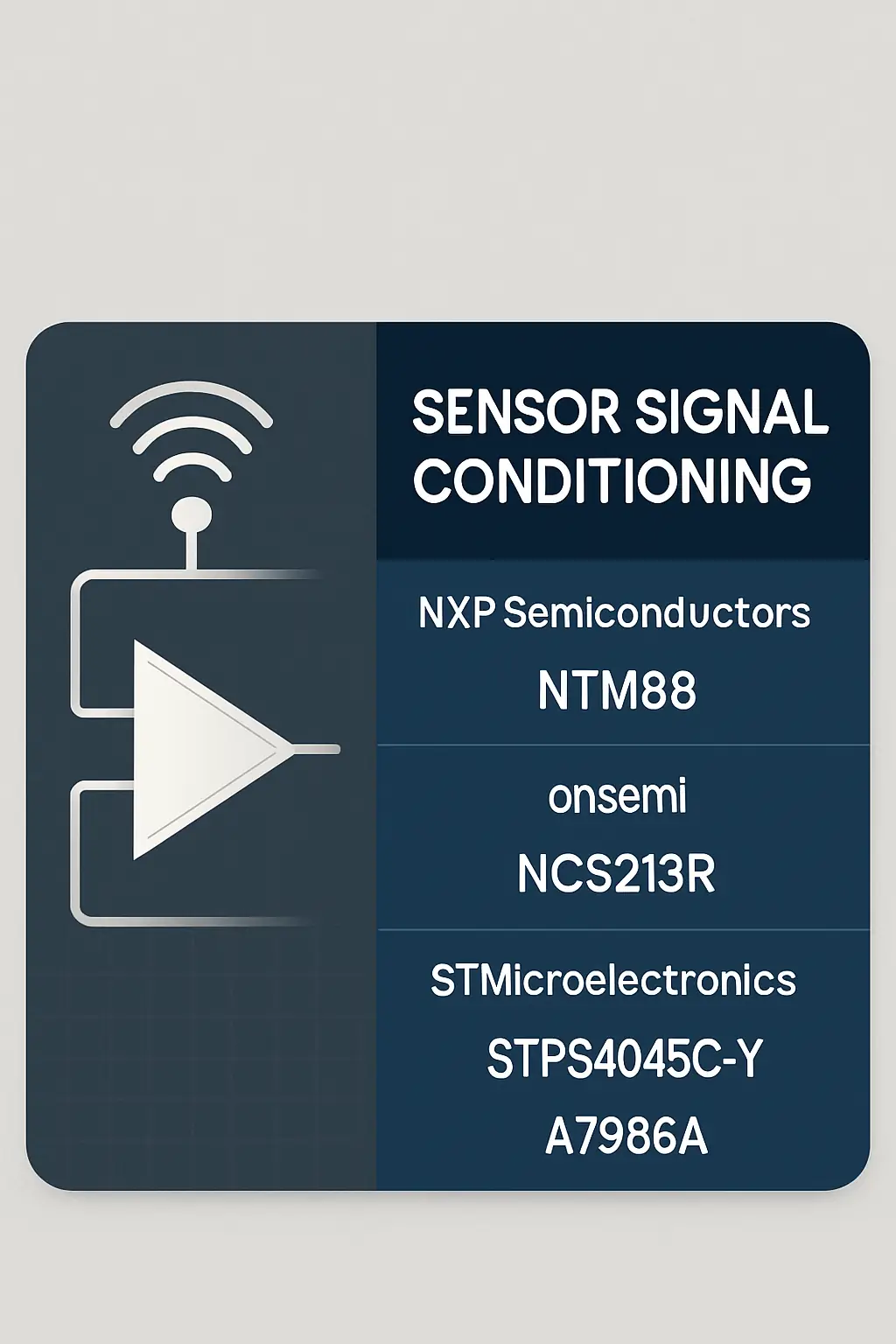Sensor Signal Conditioning
Automotive Electronics is a critical component in modern vehicles, enabling advanced functions and improving safety, comfort, and performance. Within this domain, "Chassis & Vehicle Dynamics" plays a vital role in managing the vehicle's stability, control, and handling. Specifically, "Braking Systems" are essential for ensuring safe deceleration and stopping, while "Sensor Signal Conditioning" enhances the accuracy and reliability of data from various sensors used in braking and other systems.
Sensor Signal Conditioning refers to the process of processing and optimizing sensor signals to ensure they are accurate, stable, and compatible with the vehicle’s electronic control units (ECUs). This technology is widely used in braking systems to monitor parameters such as brake pedal position, wheel speed, and hydraulic pressure. By conditioning these signals, the system can provide more precise feedback, leading to improved braking performance and enhanced driver safety.
These technologies are applied in a variety of automotive applications, including anti-lock braking systems (ABS), electronic stability control (ESC), and regenerative braking in electric vehicles. They contribute to better vehicle control, reduced stopping distances, and increased overall driving safety. Additionally, they support the integration of advanced driver assistance systems (ADAS) by providing reliable sensor data for real-time decision-making.
In summary, Automotive Electronics, particularly within Chassis & Vehicle Dynamics and Braking Systems, relies heavily on Sensor Signal Conditioning to deliver accurate, responsive, and safe performance. These systems are essential in modern vehicles, supporting both traditional and next-generation mobility solutions.
Details
Sensor Signal Conditioning

Related Parts
| Series Name | Description | Manufacturer Name | Attribute Description |
|---|---|---|---|
| NXP Semiconductors | 8-channel, 12-bit ADC, SPI interface, 1 MSPS sample rate, 2.7V to 5.25V supply, low power consumption, integrated voltage reference, temperature sensor, GPIOs, I2C-compatible control. | ||
| onsemi | 36V, 1MHz, low-power operational amplifier with rail-to-rail output, 40μA quiescent current, 105dB CMRR, 0.1Hz to 1MHz bandwidth, single-supply operation, available in SC70-5 package. | ||
| onsemi | 36V, 1.2MHz, 1.6A synchronous buck converter with adjustable output, high efficiency, low quiescent current, integrated MOSFET, and over-temperature protection. | ||
| onsemi | 36V, 5A synchronous buck controller; 500kHz fixed frequency; 8-pin SOIC package; integrated high-side MOSFET driver; adjustable output voltage. | ||
| onsemi | Dual diode, 70V reverse voltage, 250mA forward current, 4ns switching speed, 1pF capacitance, SOT-23 package, -55°C to 150°C operating temperature. | ||
| onsemi | 16V, 2A Schottky diode, low forward voltage, high efficiency, surface mount, suitable for power rectification and reverse polarity protection. | ||
| STMicroelectronics | 40V, 4A Schottky diode, low forward voltage, high efficiency, surface mount, suitable for power rectification and reverse polarity protection. | ||
| STMicroelectronics | 32-bit ARM Cortex-M3 core, 72 MHz max CPU speed, 128 KB Flash, 20 KB RAM, operates at 1.8 to 3.6 V, integrated RF transceiver for sub-GHz bands, supports multiple modulation schemes, low power consumption, embedded EEPROM emulation. | ||
| STMicroelectronics | Dual operational amplifier, 2.7V to 16V supply, rail-to-rail input/output, 1.3MHz gain bandwidth, 0.6V/µs slew rate, low input bias current, CMOS technology. | ||
| STMicroelectronics | Uni-directional TVS diode, 18V breakdown voltage, 400W peak pulse power, 5.0A forward surge current, low leakage current, fast response, SMA package. |








.png?x-oss-process=image/format,webp/resize,h_32)










